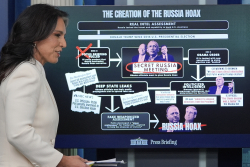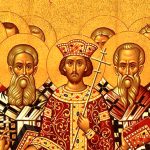Reza Pahlavi’s popularity and Iran’s mounting discontent raise the possibility of restoring a constitutional monarchy, a secular, democratic alternative increasingly viewed as a stable path forward after the Islamic Republic.
“Now is the time to rise; the time to reclaim Iran. Let us all come forward and bring about the end of this regime.” With these words, Crown Prince Reza Pahlavi addressed Iranian dissidents following Israel’s military strikes on Iranian soil since June 12.
The launch of Operation Rising Lion, targeting senior IRGC commanders and key elements of Iran’s military infrastructure, marks a significant shift. Israel states that its objective is to decapacitate, destroy, and remove the threat. Notably, the scale and precision of the strikes have raised speculation that regime change may be an unintended or intended consequence.
This scenario is further reinforced by domestic dynamics: widespread public anger and deep-seated resentment toward the Islamic Republic. Decades of repression, economic mismanagement, and ideological control have eroded the regime’s legitimacy across broad segments of society. Against this backdrop, Reza Pahlavi has reemerged as a prominent figure in the debate over Iran’s political future.
“Do not fear the day after the fall of the Islamic Republic,” he recently declared. “Iran will not descend into civil war or instability. We have a plan for Iran’s future and its flourishing.”
While the Pahlavi has consistently refrained from endorsing a specific model of governance, his historical affinity with the institution of monarchy and the broad support he continues to attract have brought renewed attention to the prospect of a constitutional monarchy.
How Was Iran’s Monarchy Toppled?
Within this context, the idea of restoring the monarchy remains one of the most contentious, and least openly discussed, topics in contemporary Middle Eastern politics. The notion of a return to monarchy has become the proverbial elephant in the room of Iranian politics, an undeniable political force that many prefer to ignore. While the movement has gained significant traction among Iranians, especially in exile, it is often dismissed as little more than a nostalgic yearning for a bygone era. Such reductive interpretations, however, fail to capture the nuanced realities of Iran’s political landscape.
In politics, few ironies rival the interplay between the passage of time and the availability of information. Political phenomena often reveal their true nature only in hindsight, and by the time sufficient evidence emerges to form a sound judgment, the opportunity for taking the right course of action has often passed. Henry Kissinger famously described this dilemma as one of conjecture: “In 1936, no one could know whether Hitler was a misunderstood nationalist or a maniac. By the time certainty was achieved, it had to be paid for with millions of lives.”
Similarly, in 1979, when revolutionary fervor was at its peak, cautioning an ideologically driven Iranian about the likely catastrophic consequences of the revolution would not only have been dismissed outright but could have also put your life at risk. Yet, there was one man who could see the revolution for what it truly was: the Shah himself. After he departed from Iran, he reflected, “If the Iranian people were fair and compared their situation with other countries and how Iran was fifty years ago, they would see that they were living in peace. They had it so easy that they decided to have a revolution to supposedly further improve their lives. But this was not a revolution of the Iranian people. It was collective suicide on a national scale that took place at the height of prosperity.”
Most ironically, the problem of conjecture extends to Iranians’ perceptions of the Shah. During his reign, many failed to appreciate the progress Iran achieved under his leadership. As history later revealed, the monarchy was steering toward liberalization, with the Shah resolutely committed to his vision. Yet paradoxically, this very liberalization fueled revolutionary fervor instead of pacifying it.
Western Liberalism’s Role in Destroying Iran’s Monarchy
Western media and leftist intellectuals, such as Jean-Paul Sartre and Michael Foucault, amplified revolutionary propaganda, emboldening Iran’s revolutionary youth. Encouraged by this external support, they pursued the uncharted and tragic path of one of the most consequential revolutions in contemporary history. Reflecting on this tragedy, Roger Scruton posed a poignant question, “Who remembers Iran? Who remembers that the shameful stampede of Western journalists and intellectuals to the cause of the Iranian revolution? Who remembers the hysterical propaganda campaign against the Shah, the lurid press reports of corruption, police oppression, palace decadence, and constitutional crisis? Who remembers the thousands of Iranian students in Western universities enthusiastically absorbing the fashionable Marxist nonsense purveyed by armchair radicals so as one day to lead the campaign of riot and mendacity which preceded the Shah’s downfall?”
Scruton’s lament still resonates. While Western intellectuals moved on, Iranians did not forget. History is a harsh teacher, reminding them daily of the peace and prosperity that could have been had the country embraced gradual change instead of revolutionary upheaval. For those who lived through Khomeini’s so-called “democratic change,” Edmund Burke’s warnings to the French revolutionaries became painfully relevant, “You had all these advantages in your ancient states, but you chose to act as if you had never been molded into civil society, and had everything to begin anew. You started to be ill because you began by despising everything that belonged to you. You set up your trade without capital.”
Reza Pahlavi’s Popularity Is Growing
Burke’s critique, informed by Britain’s 17th-century turmoil and the eventual restoration of the monarchy, echoes Iran’s predicament. Just as Britain learned through hardship that monarchy could anchor governance, many Iranians today see a constitutional monarchy as a viable path forward. Mehdi Nasiri, a former hardliner turned critic of the regime, estimates that 50 to 70 percent of Iranians support the restoration of the monarchy. Such observations, consistent with previous survey data, highlight the growing support for Crown Prince Reza Pahlavi.
This growing support is not merely a product of historical disillusionment. The character and leadership of Crown Prince Reza Pahlavi have played a crucial role in fostering trust. Since his exile, Reza Pahlavi has forcefully advocated for democracy in Iran, adopting a leadership style best described as “soft decisiveness.”
Crown Prince Reza Pahlavi has consistently advocated for a peaceful transition to democracy. His lineage, tied to the Pahlavi dynasty’s pivotal contributions to modern Iran, and his unwavering support for the Iranian people have earned him a unique credibility.
More compelling than his family legacy are the three guiding principles that define his leadership: preserving Iran’s territorial integrity, establishing a secular democracy based on human rights, and determining Iran’s political future through free elections. While these principles deserve further exploration, they have positioned Crown Prince Reza as a unifying and trustworthy figure in Iran’s fragmented opposition.
Trust is a rare commodity in Iranian politics, yet Reza Pahlavi’s reputation for reliability stands out. This trust is partly rooted in the enduring legacy of the Pahlavi dynasty. Iran’s education, healthcare, and military infrastructure still function on foundations laid during the Pahlavi era.
Would Reza Pahlavi Lead Iran Responsibly?
However, trust in the Crown Prince does not guarantee the automatic restoration of the monarchy. Reza Pahlavi himself remains committed to allowing the Iranian people to decide their future governance through a free referendum. This pragmatic stance has attracted support even from republicans who value his leadership in facilitating a democratic transition.
Critics often dismiss calls for a constitutional monarchy in Iran as an endorsement of authoritarianism. This critique, however, overlooks the nuances of the movement. Constitutional monarchies, when equipped with adequate checks and balances, have consistently proven their ability to safeguard democratic processes. Indeed, some of the world’s most robust democracies, such as the United Kingdom, Sweden, and Norway, still adhere to their time-honored traditions of monarchy, blending historical continuity with modern governance.
In many of these states, the monarchy honors their distinct national history while serving as a unifying institution, particularly in countries with heterogeneous ethnic compositions. In the absence of such an institution, a state can quickly descend into chaos, giving rise to ethnic and sectarian conflicts. This threat is even more severe for a state where years of ideological governance have eroded national identity, leaving it vulnerable to radical ideologies rooted in racialism, anti-imperialism, and political Islam.
Supporters of the constitutional monarchy in Iran emphasize structure and functional efficiency over ideology. Many argue that Iran’s unique geography, ethnically diverse population, and rich cultural and historical legacy make a constitutional monarchy a more suitable form of governance for ensuring stability and promoting political development. Unlike ideologically driven movements, which often descend into dogmatism, proponents of constitutional monarchy lean toward rational pragmatism.
This approach arguably holds greater potential for democratization, secular nationalism, and structural flexibility, aligning more effectively with Iran’s diverse society and the lived experience of a people whose revolutionary fervor has long since faded, unlike movements rooted in Marxist or Islamic Marxist ideologies.
Admittedly, a constitutional monarchy is not a flawless system, nor is it immune to the presence of radicals among its supporters. Yet, calls for its restoration are far more than nostalgic idealism. They reflect a rational desire by people weary of utopian promises and revolutionary chaos. The return to a constitutional monarchy signifies a collective yearning for stability and a rejection of further revolutionary political experiments.
Constitutional monarchy has deep institutional roots in Iran, providing both a sense of historical familiarity for the people and a framework for constitutional transition. These institutions can facilitate the transition process and, at the same time, drive the long-overdue political and economic development that years of ideological governance have stalled.
Western commentators and policymakers must recognize this movement as a legitimate and rational outcome of Iran’s historical experience. To dismiss it as authoritarian nostalgia or irrationality is to misunderstand the dynamics of Iran’s democratic transition. Instead, this growing support deserves acknowledgment as a viable and reasoned response to decades of turmoil.
About the Author: Masoud Zamani
Masoud Zamani is a lecturer in International Law and International Relations at the University of British Columbia. He previously served as a tenured assistant professor of International Law and held faculty positions in both the Middle East and Europe, including at the Universitat Oberta de Catalunya.
Image Credit: Shutterstock/Alexandros Michailidis.


















